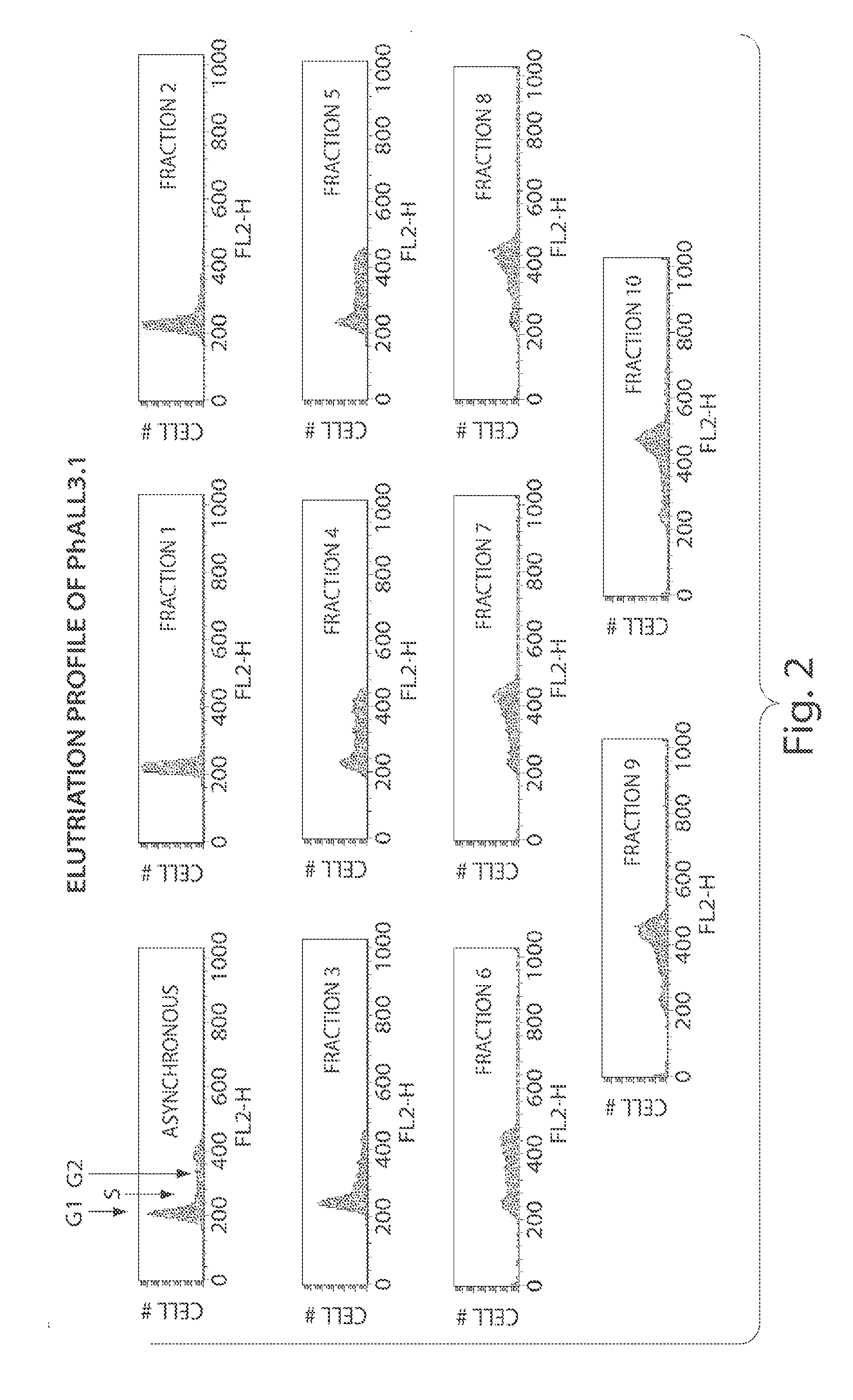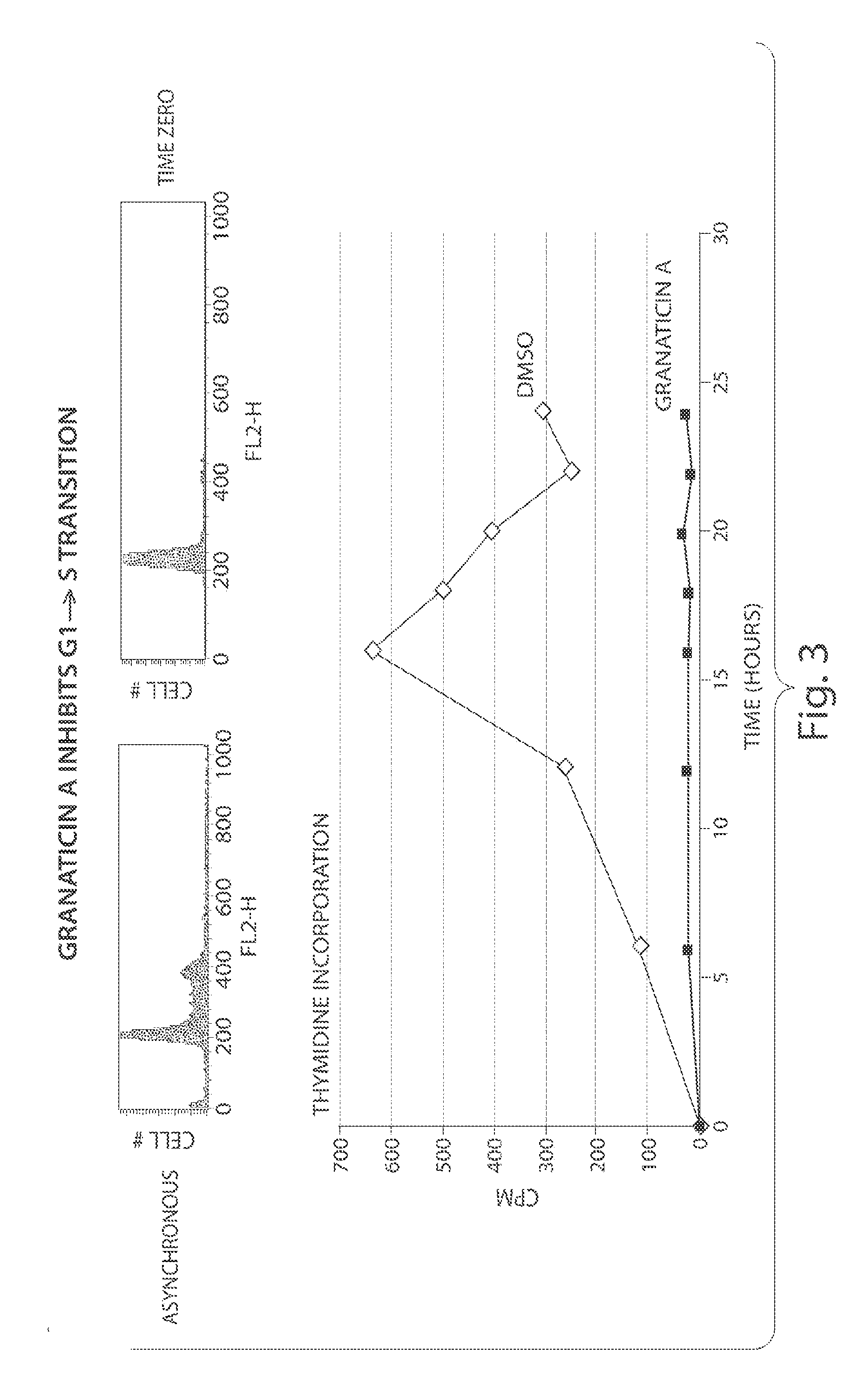CDC7 kinase inhibitors and uses thereof
a kinase inhibitor and cdc7 technology, applied in the field of cdc7 kinase inhibitors, can solve the problems of poor risk disease, chemotherapy resistance, and inability to fully understand the biochemical mechanisms of initiation of eukaryotic dna replication, and achieve the effects of enhancing the prophylactic efficacy of another prophylactic agent, preventing recurrence, and improving overall prophylaxis
- Summary
- Abstract
- Description
- Claims
- Application Information
AI Technical Summary
Benefits of technology
Problems solved by technology
Method used
Image
Examples
example 1
Inhibition of Primary Patient Samples
[0355]Table 1 highlights a series of primary patient leukemia samples-both acute and chronic and treatment naïve and refractory and the effect of granaticin A, granaticin B, derivative 1, and derivative 2 to inhibit cellular proliferation. The IC50 data reveals that granaticin B is approximately one log more active than granaticin A against all the samples tested and inhibits cellular proliferation in the low nanomolar range. The two starred samples represent serial samples taken from the same patients after they received 2-3 cycles of additional high dose salvage chemotherapy and indicate that although refractory to salvage chemotherapy, the Cdc7 pathway remains a potentially efficacious target as the sensitivity to these compounds remains unchanged. Importantly, each patient sample was resistant to the prior therapy received using this assay.
[0356]
TABLE 1Inhibition of patient leukemia samplesIC50 (microM)GranaticinDeriv.Deriv.GranaticinLeukemia...
example 3
Stability Studies Using Granaticin A
[0359]Standard liver microsome stability tests were performed with mouse and human microsomes with granaticin A and revealed that this drug is cleared quickly by the liver. The stability of granaticin A was determined in mouse and human liver microsomes. In mouse liver microsomes, recovery at 30 minutes was 3.68%. In mouse liver microsomes, recovery at 60 minutes was 3.84%. In human liver microsomes, recovery at 30 minutes was 23.89%. In human liver microsomes, recovery at 60 minutes was 12.01%.
example 4
Preliminary Screening of Granaticin B
[0360]Standard solubility studies were conducted with granaticin B. In aqueous solution, 4.0 mg / ml of granaticin B is soluble. In alcohol, >188 mg / ml of granaticin B is soluble. In methanol, >252 mg / ml of granaticin B is soluble.
[0361]Different formulations of granaticin B were also tested and PK data measured (see Table 3).
[0362]
TABLE 3Preliminary Mouse PK ScreeningGranaticin B,Mouse PK screeningAUCinfHalf-lifeCmaxCL5 mg / kg(hr-μg / mL)(t2 / 1β)(μg / mL)(mL / hr / kg)A: 1.25% of Ethanol3532.56.92834.71415.4& Tween-20B: 0.6% GDO-12477981.53445.52537.210.5C: 5% GDP-122689.96.62449.91858.8D: DMSO2724.52.12210.91835.2
PUM
| Property | Measurement | Unit |
|---|---|---|
| time | aaaaa | aaaaa |
| time | aaaaa | aaaaa |
| time | aaaaa | aaaaa |
Abstract
Description
Claims
Application Information
 Login to View More
Login to View More - R&D
- Intellectual Property
- Life Sciences
- Materials
- Tech Scout
- Unparalleled Data Quality
- Higher Quality Content
- 60% Fewer Hallucinations
Browse by: Latest US Patents, China's latest patents, Technical Efficacy Thesaurus, Application Domain, Technology Topic, Popular Technical Reports.
© 2025 PatSnap. All rights reserved.Legal|Privacy policy|Modern Slavery Act Transparency Statement|Sitemap|About US| Contact US: help@patsnap.com



